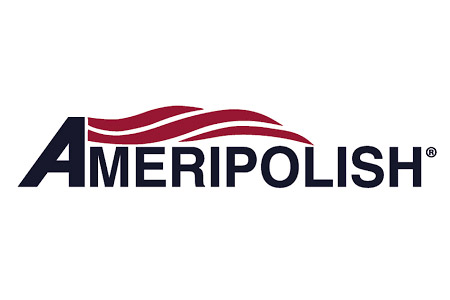
Sealers are critical in protecting indoor and outdoor decorative concrete surfaces from the elements, foot traffic, daily wear and tear, spills, and more. Acting as a protective barrier, sealers help maintain the appearance and functionality of decorative concrete for years.
Pros of Sealing Decorative Concrete
When it comes to concrete surfaces, sealing is a must-do step. The long-term benefits far outweigh the cost or effort involved. Here are some of the pros of sealing a surface:
- Creates Durability: The extra layer of defense that sealers provide protects the surface from cracking, flaking, fading, and more.
- Protects from Contaminants: Sealers shield concrete from harmful substances such as oil, chemicals, and water. Left unprotected, a concrete surface is vulnerable to substances seeping in and weaking the material. This protection ensures long-term integrity of the surface.
- Protects from Freeze and Thaw Cycles: When temperatures drop, water that has seeped into the concrete’s pores can freeze and expand, causing cracks and other damage. A high-quality sealer minimizes the amount of water that seeps into the concrete’s pores, reducing the risk of freeze-thaw damage.
- Prevents Mold and Mildew: When moisture seeps into unsealed concrete, it can become trapped, leading to mold and mildew. This isn’t just an aesthetic issue—mold and mildew in a concrete surface can cause health issues too. By sealing the surface, you can prevent moisture retention and buildup.
- Protects Against Wear and Tear: Areas that get a lot of use are prone to degrading over time. A high-quality sealer that’s been applied properly can reduce surface wear, retaining the appearance of the concrete surface for longer.
- Eases the Cleaning Process: Dirt, stains, and spills can be more easily removed from a surface that’s been sealed, making it easier to keep clean and prevent stains.
Whether you’re protecting a concrete driveway, patio, interior surface, or any other decorative concrete surface, applying the right sealer is key to surface longevity.
Types of Concrete Sealers
There are several types of concrete sealers, each offering unique benefits depending on the needs of the surface being treated. The most common types include:
- Penetrating Sealers seep into the concrete’s pores and create a long-lasting barrier from within.
Ideal for: Exterior surfaces exposed to harsh weather and heavy traffic. - Acrylic Sealers form a thin, protective layer that sits on the surface (rather than penetrating the surface). Compared to other sealers, they are one of the more affordable options, and they are also easier to apply. Available in solvent- and water-based varieties. Solvent-based options offer a glossier finish and greater durability.
Ideal for: Locations where you want to enhance color of a surface. - Polyurethane Sealers are known for their thickness which provides high durability and abrasion resistance.
Ideal for: They are best suited for high-traffic areas like driveways and patios and offer excellent protection against UV rays, water, and chemicals. - Epoxy Sealers provide a thick, durable, and glossy finish that is resistant to heavy wear. They form a hard, non-breathable surface, so they are best used in areas where moisture isn’t a concern.
Ideal for: Industrial or garage floors.
How to Apply a Concrete Sealer
When applying a concrete sealer, it’s crucial to follow proper techniques to ensure a lasting finish. Before beginning the sealer application process, the surface must be thoroughly cleaned and dried to ensure that dirt and moisture do not get trapped underneath.
The application process depends on the type of sealer you’re working with. For penetrating sealers, using a sprayer is often the best method to ensure even coverage. Surface-level sealers like acrylic or epoxy can be applied with a roller or brush.
Common Pitfalls
Here are some common issues people encounter when applying sealer to a concrete floor.
- Not cleaning the surface properly, which can result in a poor bond between the sealer and the concrete.
- Applying a layer of sealer that’s too thick, causing uneven curing, bubbles, or a cloudy finish.
- Insufficient drying time between coats, weakening the finish.
How Often Should You Reapply Concrete Sealers?
The frequency you reapply a sealer depends on several factors: the type of sealer used, the type of exposure to the elements the surface gets, and the amount of traffic the surface receives. High-traffic areas, outdoor surfaces exposed to the elements, or surfaces with frequent use may require more frequent reapplications to maintain protection and appearance.
Where to Get Materials, Tools & Equipment for Sealing Jobs in the Dallas Area
At both Superior Decorative Concrete Supply locations, we have the materials and equipment necessary to complete your decorative epoxy coating work. Our sales associates are ready to discuss your projects and recommend the best products for the job.
[email protected]
We have two locations for your convenience:
10865 Denton Drive
Dallas, Texas 75220
(214) 227-9898
(888) 600-1460 (Toll Free)
2001 Central Circle, STE 101
McKinney, Texas 75069
(214) 299-7909
(855) 453-0005 (Toll Free)





